This data snapshot summarizes federal data on nonmedical instructional faculty appointments and graduate student employment.1 The primary data source is the Integrated Postsecondary Education Data System (IPEDS) database; estimates of faculty appointments are included from the National Study of Postsecondary Faculty (NSOPF) for selected years from 1987 to 2002, the earliest comparable data available.
Faculty Appointment Types
Long-standing AAUP policies recognize only three types of full-time faculty appointments: (a) tenured (with continuous tenure), (b) tenure-track (probationary for tenure), and (c) non-tenure-track (special appointments), which should be clearly designated at the outset as involving only a brief association with the institution.2 That is because the Association views tenure as a right accruing to all faculty members successfully completing the probationary period, not as a privilege or reward granted to a select few. However, US colleges and universities are overly reliant on faculty members holding contingent appointments that are ineligible for tenure, including contract-renewable (usually full-time non-tenure-track) and adjunct (usually part-time fixed-term or temporary) appointments.
This data snapshot disaggregates full-time contingent appointments into two categories—non-tenure-track and no tenure system—to distinguish faculty members hired off the tenure track from those working in institutions that do not have a tenure system at all. Part-time faculty appointments are reported in one category.3 Figures in this data snapshot represent appointments held by nonmedical instructional staff, with or without formal faculty status,4 in degree-granting nonprofit institutions.
Graduate student employees often have independent teaching or research responsibilities and may be termed “faculty” to the extent that they function as such. Because many institutions lack the capacity to report reliably to IPEDS the number who have such responsibilities, this data snapshot treats graduate student employees separately.
Summary of Findings
The makeup of the US academic workforce has shifted from mostly full-time tenured or tenure-track faculty members to mostly faculty members holding contingent appointments that are ineligible for tenure (see figure 1).
- About 32 percent of faculty members in US colleges and universities held full-time tenured or tenure-track appointments in fall 2023, compared with about 53 percent in fall 1987.
- About 23 percent of faculty members held full-time tenured appointments, compared with about 39 percent in fall 1987.
- About 68 percent of faculty members in US colleges and universities held contingent appointments in fall 2023, compared with about 47 percent in fall 1987.
- Nearly half (49 percent) of faculty members were employed part time in US colleges and universities in fall 2023, compared with about 33 percent in fall 1987.
Most faculty members in US colleges and universities held contingent appointments across all institution types in fall 2023 (see figure 2).
- The percentage of faculty members holding contingent appointments ranged from about 51 percent among Research I universities to about 83 percent among associate’s colleges.
The number of faculty members holding contingent appointments increased substantially from fall 2002 to fall 2023, while the number holding tenured or tenure-track appointments barely changed (see figure 3).
- Full-time contingent appointments increased about 65 percent from fall 2002 to fall 2023.
- Full-time tenured appointments increased about 6 percent from fall 2002 to fall 2023.
- Full-time tenure-track appointments decreased about 7 percent from fall 2002 to fall 2023.
- Part-time appointments increased about 20 percent from fall 2002 to fall 2023.
Most full-time contingent faculty members are on renewable contracts, while most part-time contingent faculty members are on nonrenewable less-than-annual contracts (see figure 4).
- About 76 percent of faculty members on part-time contingent appointments were on nonrenewable short-term contracts in fall 2023.
- About 85 percent of faculty members on full-time contingent appointments were on renewable (annual or multiyear) contracts in fall 2023.
US colleges and universities have increasingly relied on graduate student employees for teaching and research (see figure 5).
- The number of graduate student employees with teaching or research responsibilities increased by over 40 percent from fall 2002 to fall 2023.
Conclusion
This data snapshot documents the shift in US academic employment from mostly full-time tenured or tenure-track appointments to mostly contingent appointments. The ever-increasing reliance on faculty members holding contingent appointments and graduate student employees—all of whom have less job security, remuneration, and institutional support—weakens academic freedom, faculty governance, and the integrity of faculty work. These trends ultimately threaten the ability of institutions to fulfill their obligations to students and to society.
Faculty members require special protections because of the nature of their work. Tenure is the means of effecting academic freedom, which in turn serves the common good by ensuring the quality of teaching and research in higher education.5 As the saying goes, “Faculty working conditions are student learning conditions.” Increasing the proportion of tenure-line faculty positions would improve faculty working conditions, which would in turn support effective teaching and benefit students.
Updated findings will be posted on the AAUP’s interactive data website (https://data.aaup.org) as the National Center for Education Statistics releases new or revised datasets. The AAUP’s data website includes institution-level data and provides tools for disaggregating summary data by additional variables such as region, state, institution size, Carnegie classification, and so forth. The website also provides tools for exploring faculty compensation data from both the AAUP and IPEDS.
Glenn Colby is senior researcher at the AAUP.
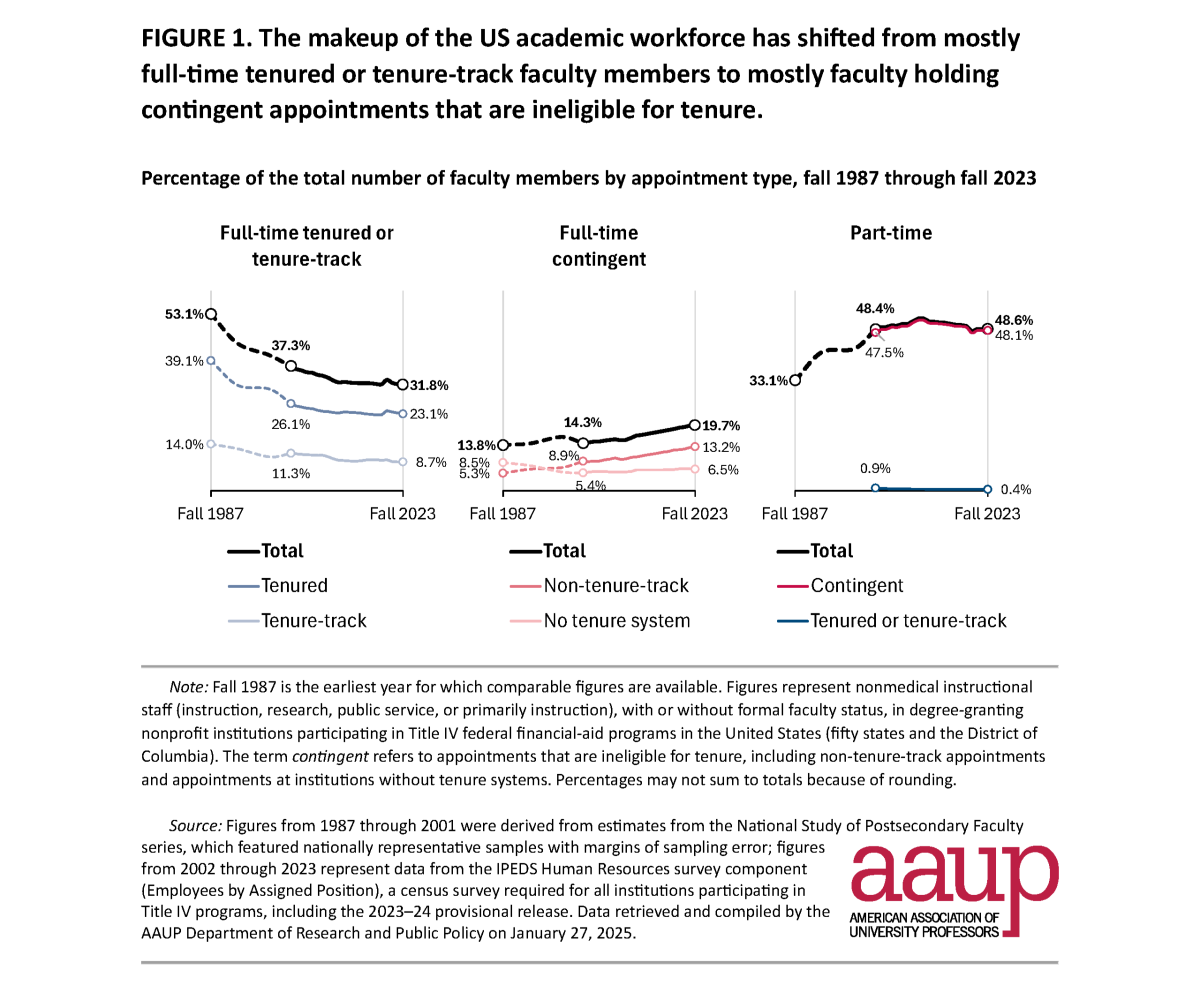
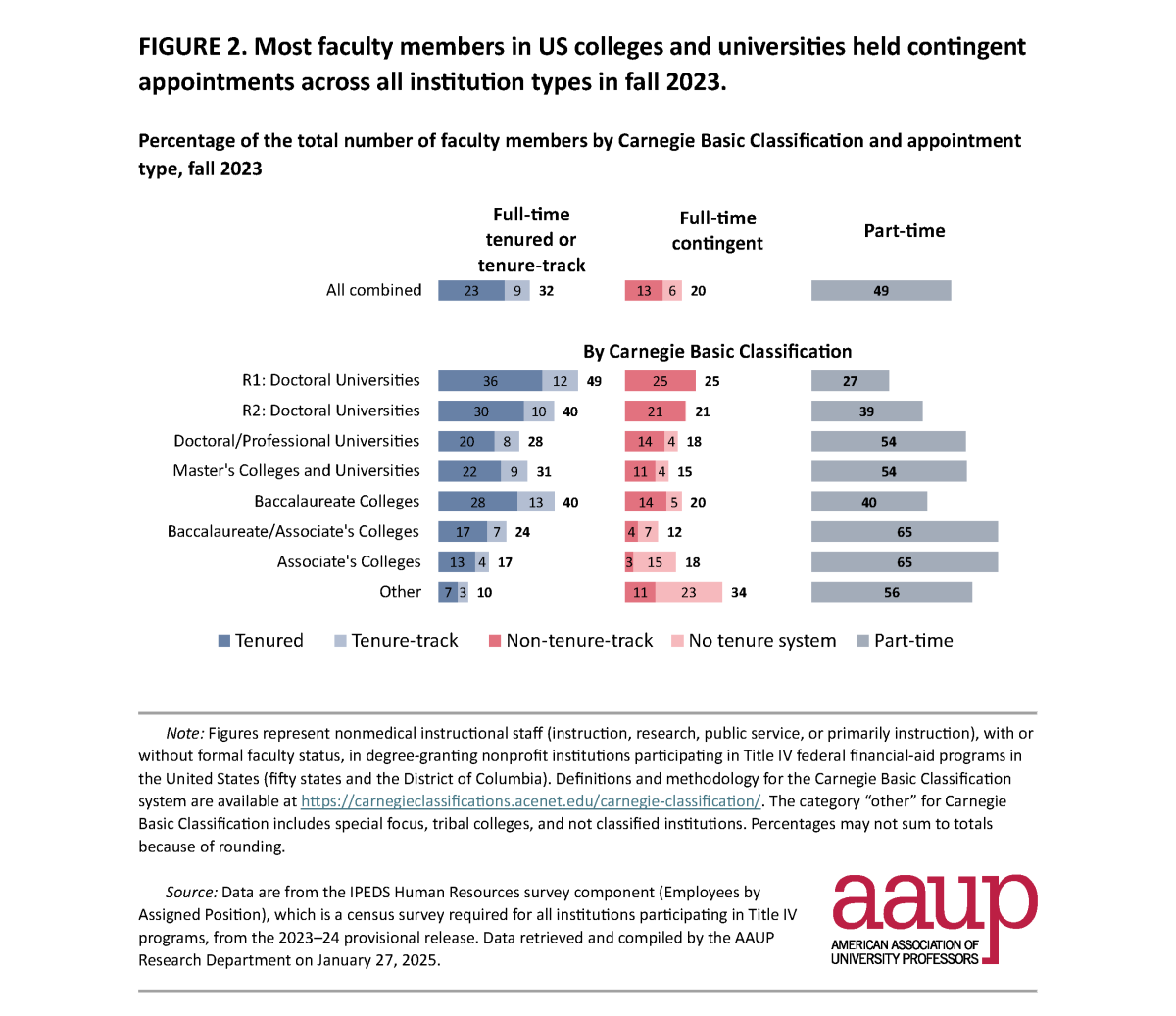
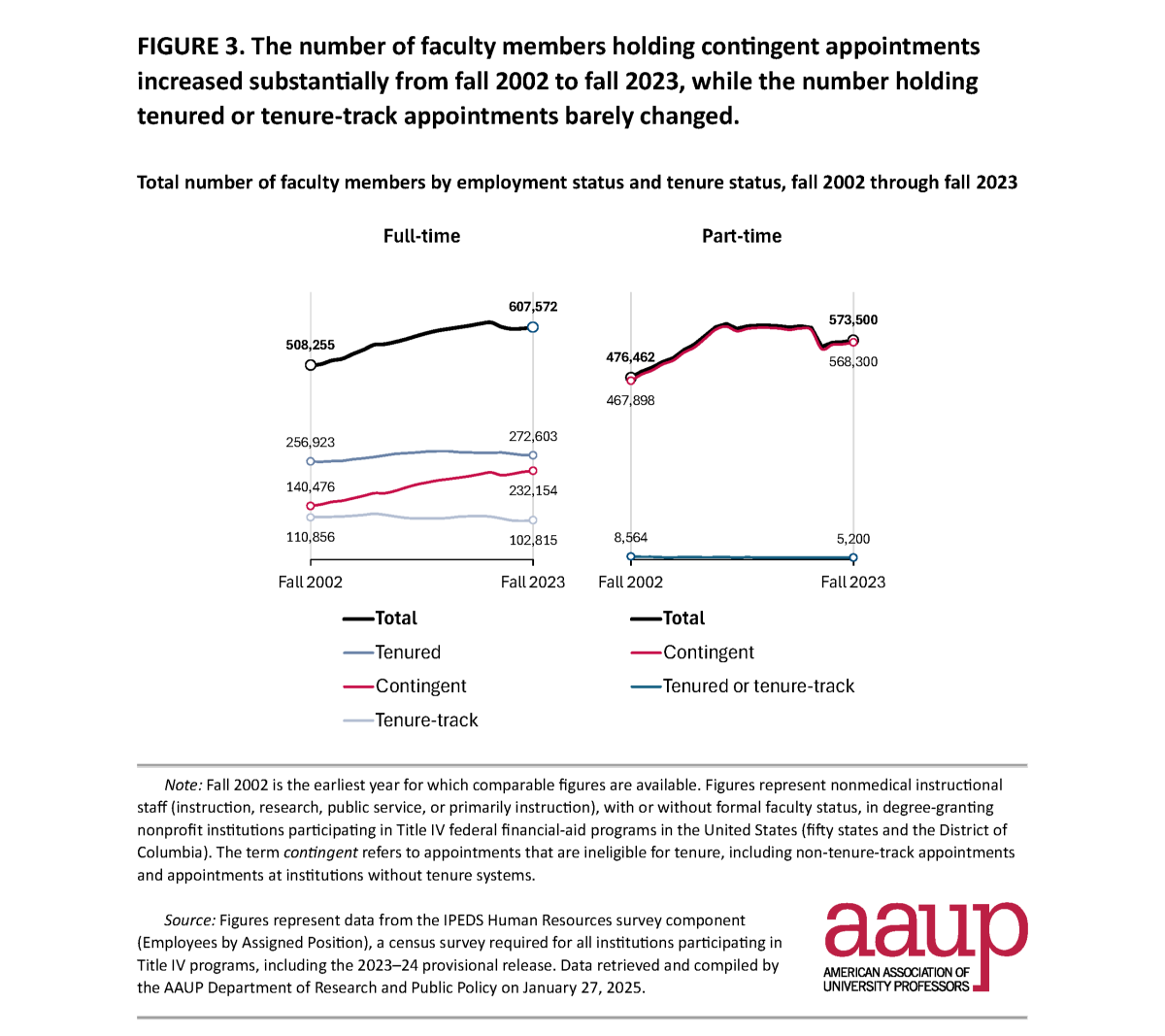
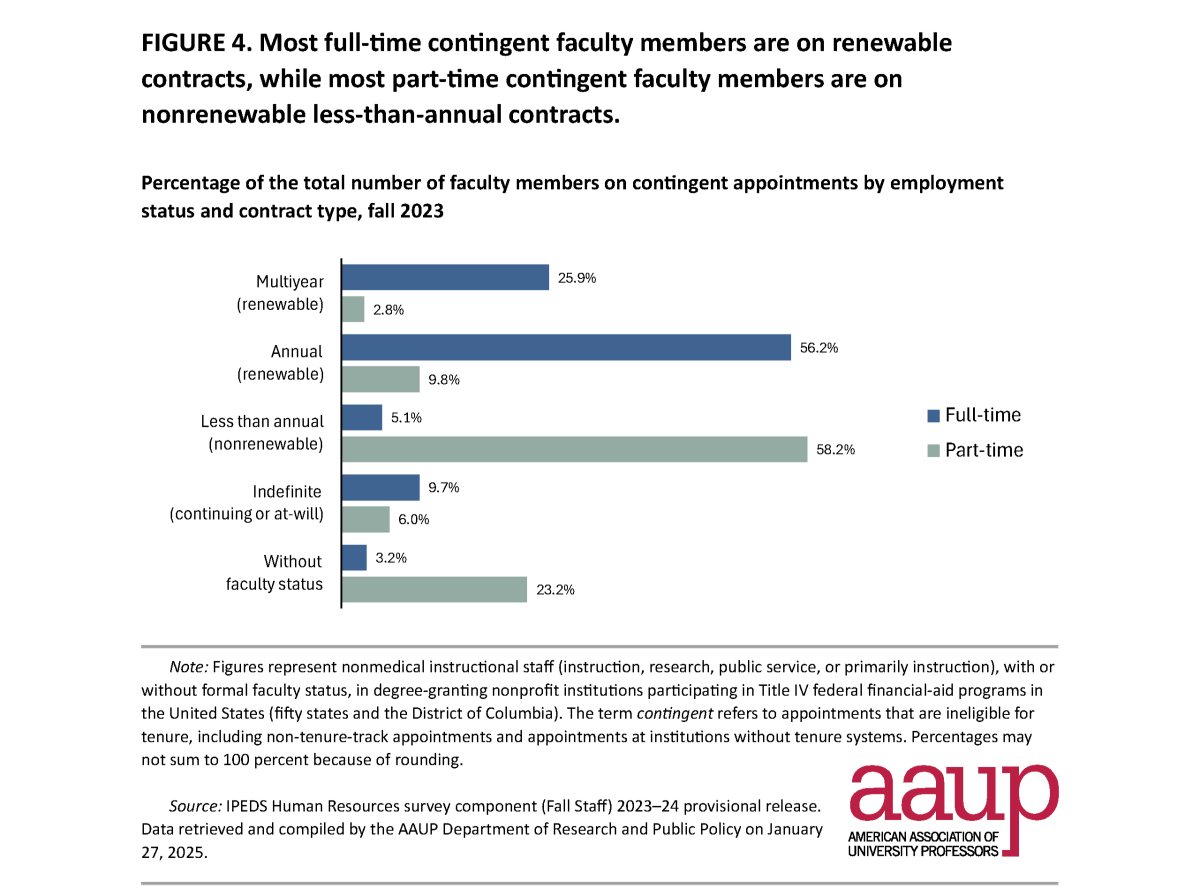
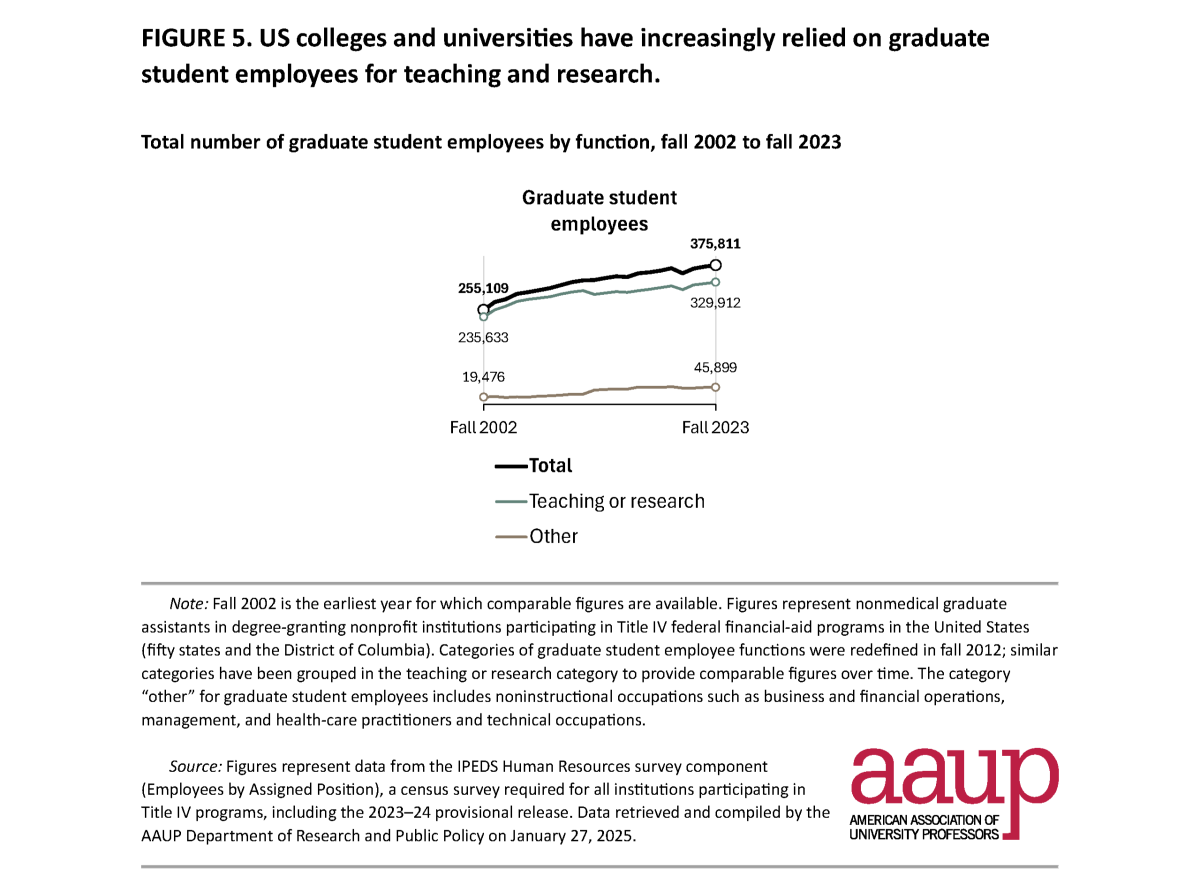
Notes
1. Federal data on medical instructional faculty appointments and graduate student employment is summarized in a companion publication: Glenn Colby, “Data Snapshot: Tenure and Contingency in US Medical Schools, Fall 2023,” Academe 111 (Spring 2025), https://www.aaup.org/article/data-snapshot-tenure-and-contingency-us-medical-schools-fall-2023
2. See the AAUP’s 2010 report Tenure and Teaching-Intensive Appointments.
3. Each year a small number (less than 1 percent) of part-time appointments are tenured or tenure-track.
4. Faculty members reported to IPEDS as instructional staff “without faculty status” make up nearly 12 percent of the total but are often excluded from reports on the academic workforce. Anecdotally, most are adjunct faculty members, but some are postdoctoral fellows or others with teaching responsibilities. Almost all (95 percent) are part-time.
5. The relationship between tenure and quality of teaching and research is discussed in the AAUP’s 2003 report Contingent Appointments and the Academic Profession.



